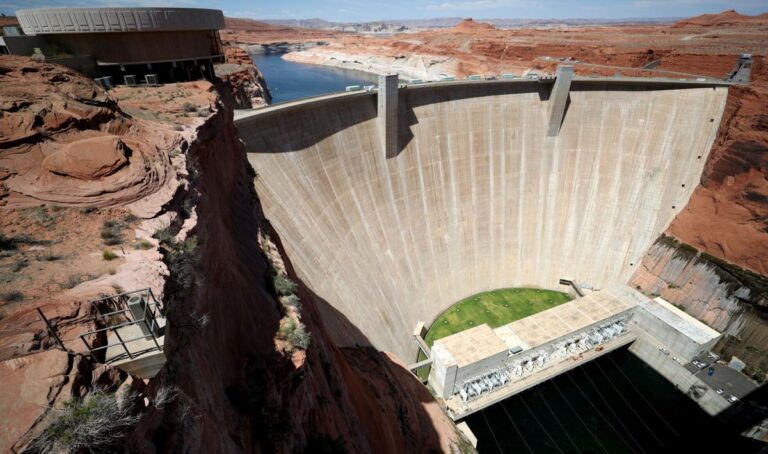The U.S. Bureau of Reclamation is considering a reengineering project for Glen Canyon Dam to protect the dam’s ability to deliver water and power if Lake Powell’s levels fall below 3,490 feet.
The discussion was prompted, in part, when four steel tubes, known as outlet works, were reportedly damaged last year during an experimental flow intended to restore sediment to depleted Grand Canyon beaches. While the damage was not crippling, the Bureau issued a memo earlier this year that the outlet works should not be relied upon as the only source of delivering water through the dam at periods of low elevations.
The reengineering project would drill tunnels through the dam and is one of several options the Bureau is considering to address concerns about the ability to deliver Colorado River water. The 3,490-foot water level is the lowest at which the dam’s turbines can generate electricity. The outlet tubes are currently the only means of getting water through the dam at low levels.
Glen Canyon Dam is the largest individual source of federally subsidized power generated by dams in Upper Colorado. The dams provide electricity to five million customers in seven states, including Arizona.
The Bureau has yet to publicly disclose any of the possible remedies it is considering.
River flows have been generally declining for 24 years, according to researchers. The idea of drilling tunnels into the dam’s abutments was first suggested in the 1990s. The tunnels would allow water to pass through the dam whenever officials want. It could also reduce the risk of damage to the dam in the event of a flood.
Because the reservoirs’ water levels are higher today than they have been for the last two years, the damaged outlet tubes do not constitute an imminent threat, researchers say. Still, the long-term operations have been called into question, and the researchers say the Bureau will have to find solutions and take action soon.
If the tunnel drilling program were to be implemented, it would require Congressional authorization. Initial cost estimates have been projected at hundreds of millions, possibly even billions, of dollars, and the project would take several years.
In addition to the time and expense, some groups who favor dramatic reductions to Colorado River Basin water use as a means of maintaining appropriate water levels in Lake Powell could oppose the plan.
The Bureau has said it has narrowed its list of possible choices for delivering power at water levels below 3,490 feet from nine options down to three. Those choices are under review in an appraisal design study that is expected to be completed before the end of 2025. (Source)

